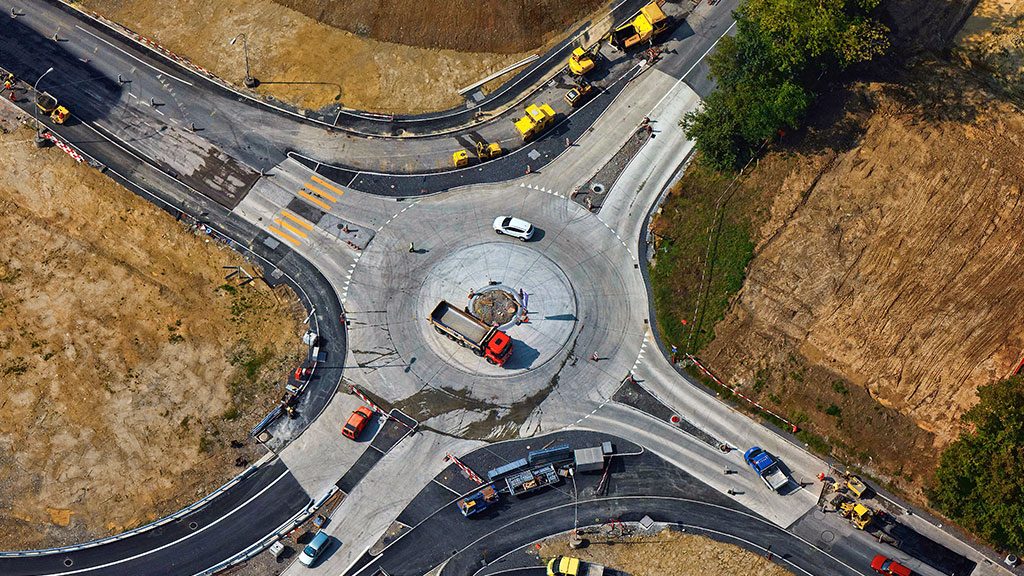When the Nova Scotia government announced plans to build another highway using the public-private partnership (P3) model, those opposed to P3s were quick to attack. But the evidence does not support the criticism.
In Canada, well-negotiated P3s do, in fact, provide assurance to governments that major infrastructure projects will be delivered on time, without “scope creep”, and on budget — and without the added fiscal burden alleged by researcher Christopher Majka in his recent report.
The report’s title leaves no doubt about Majka’s stance: Highway Robbery: Public Private Partnerships and Nova Scotia Highways.
While he produces a thought-provoking panorama of the issues in the evolving P3 debate, his headline-grabbing assertions deserve critical scrutiny. He claims that Nova Scotians will pay $232 million more over three decades for the Cobequid Pass Toll Highway, a P3 toll road built in the mid-1990s, when contrasted with a conventional highway project tender on an original construction-only price tag of $124 million. He projects a similar fate for the proposed Sutherland’s River-Antigonish Highway 104 expansion project, concluding that P3s are costly and unnecessary.
Majka’s strawman claim that P3s are for off-book financing is yesterday’s argument. Public Sector Accounting Board standards now ensure that Canadian governments fully reflect their financial obligations in their financial statements, including capital and long-term obligations.
Majka rightly argues that project costs should include the cost-of-capital over time, noting that this cost is higher for the private sector compared to rates available to governments. He calculates the earlier P3 highway’s project-financing differential at more than $100 million over three decades. Given current rates and spreads, this argument is stale-dated. Despite this, he pairs the current government borrowing rates with the historical differential to claim the proposed P3 project would cost over $66 million in additional, avoidable interest costs.
Long-term financing costs for both public-sector and private-sector ventures are currently both low and narrowing. ‘Patient’ pools of capital, like pension funds, are bidding-down the price for reliable, long-term infrastructure investments like this. At worst, the cost-of-capital differential on risk-adjusted projects is now marginal. Now is the time to build and finance infrastructure to take advantage of low interest rates.
Evidence shows that traditionally-procured projects are routinely delayed, over-budget and out-of-scope. For P3 projects, the taxpayer is largely shielded from these risks. On large infrastructure projects, a delivery delay of a few months, or a several percentage-point increase in project costs or scope, will quickly overwhelm any marginal gains from lower cost-of-capital or similar cost avoidance using conventional procurement.
Majka legitimately criticizes the shortcomings of some earlier P3s, but Canada has learned from these experiences. For example, best practice now avoids governments being locked into an expensive financing regime over the life of the P3 contract, or allowing the private operator to reap a re-financing windfall, once the initial risks have dissipated.
Curiously, Majka asserts an additional, “avoidable” cost with P3s: the need for private parties to make a profit, as if bidders on government tenders are not-for-profit entities. From his time at Oxford University, Majka may have encountered professor Bent Flyvbjerg who has catalogued significant cost overruns of government projects around the world (and who testified before the Muskrat Falls Inquiry). Majka proposes that conventional tenders be fixed price, ignoring the fact that most are designed this way, but that change orders do result in price creep.
Majka references the time-consuming P3 due-diligence process, which occasionally leads to higher but more accurate project cost estimates (since bidders know they will be held to P3 contract terms).
Reflecting Flyvbjerg’s ‘optimism-bias’ hypothesis, it might be more appropriate to ask why conventional public procurement regularly underestimates delivery dates and project costs and tends to inflate use-and-revenue-projections. In well-crafted P3s, even when change-orders or cost-overruns occur, they typically fall on the P3 consortium, not on the taxpayer.
Majka’s critique also focuses on P3s that include operation and maintenance. Under well-crafted P3 agreements, the ongoing performance of the private sector is assured using incentives and penalties. The infrastructure asset must be retained in public ownership and kept in good working order or physical condition — and returned that way at the end of the term of the P3 agreement. Predictably, the latter condition gives private bidders a strong incentive to design and operate facilities with an eye to controlling ongoing maintenance costs and investing in regular refurbishment.
Experienced public servants will smile at Majka’s criticism of the price-tag for maintenance requirements imposed on P3s by governments, in order to keep infrastructure in good repair. Despite recent asset-management reforms, the public sector does not adhere to this approach, as the large and growing deferred maintenance liabilities on government balance sheets attest. Thus, future taxpayers will pay the price.
Majka asserts that the public sector inevitably does a better and more economical job on routine and major maintenance of roadways and similar operational activities. That claim cannot be justified. It depends on contract terms, incentives and penalties. If anything, the allegation that Nova Scotia resumed responsibility for maintenance on the P3 highway under poor terms just makes the point. From solid-waste collection and traffic-signal maintenance to snow clearance on public highways, we now have ample evidence that the cost and quality of maintenance and operations depends entirely on setting service standards, and then funding and enforcing them appropriately.
The final major P3 cost differential cited by Majka is the cost of the additional infrastructure and technology necessary to operate a toll road. The alternative he breezily suggests is that a no-charge public expressway can be fully financed by provincial tax sources and public debt, and does not need tolls, unlike a P3.
Requiring a financial contribution from those who use and benefit from public infrastructure and utilities is reasonable. Does Majka think that those who use more electricity or water should pay the same as those who conserve?
Correspondingly, a P3 project does not have to generate its own revenue. The sponsoring public authority can offer the P3 operator so-called “availability” payments, based on level of use, quality of operation, and other performance-related criteria, as Nova Scotia evidently plans to do with its next P3 highway.
Majka rightly suggests that we should have more information-sharing on all infrastructure projects, P3s and otherwise. That would help governments improve P3 terms, public accountability and cost transparency. But P3s cannot be dismissed out-of-hand. Evidence suggests that well-crafted P3 projects deliver good results, are not inherently more expensive and can be more innovative. More importantly for Canada’s future, without P3s a lot of vital infrastructure will remain unbuilt — and public-safety, health care and economic-productivity gains will go unrealized.
Michael Fenn was an Ontario deputy minister under three premiers. Andy Manahan is the executive director of the Residential and Civil Construction Alliance of Ontario.











Well done Michael and Andy. It was sad that you had to defend and clarify issues that have been dealt with for so many years, yet some authors or reports still debating on them, like the Majka’s report.
Thanks for a compelling rebuttal to many unsubstantiated criticisms.